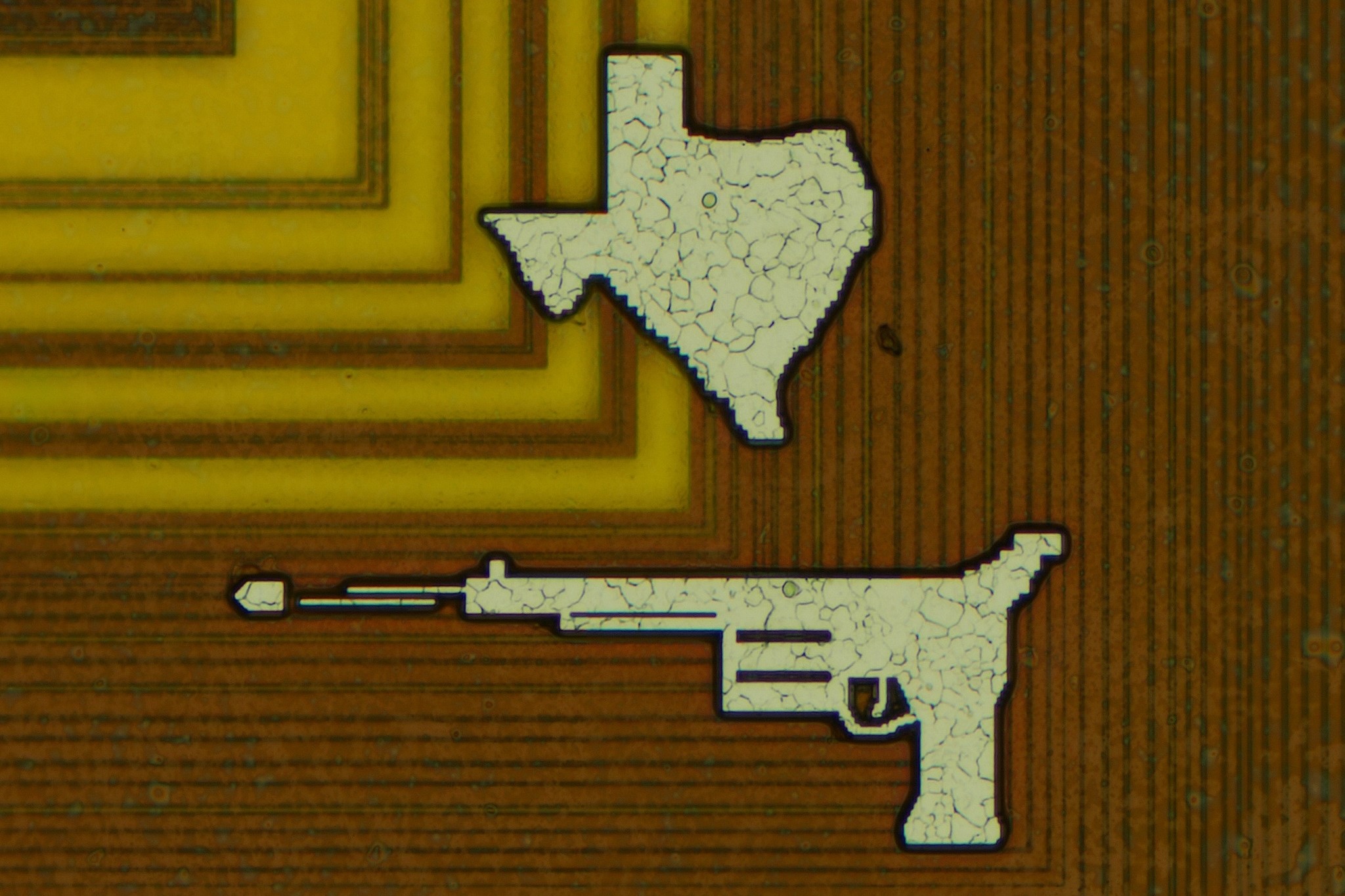
This week saw two revelations for AMD's classic K7-based Athlon processors from the late 90s and early 2000s: They bore chip art depicting the state of Texas and a revolver per Fritzchens Fritz, and AMD changed its internal codename system to avoid a potential lawsuit according to AMD memory engineer Phil Park.
The detailed images of Athlon's chip art come courtesy of Fritzchens Fritz, who is well-known for taking photos and x-rays of computer hardware. He photographed a Pluto-based Athlon CPU, which came out in late 1999 and powered models clocking from 550MHz to 800 MHz. A corner of the CPU is etched with the borders of Texas and a revolver, similar to the famous Colt Single Action Army. These images were probably included to honor or at least reference AMD's Austin, Texas branch.
These images garnered much attention, including from veteran AMD engineer Phil Park, who revealed more details of Athlon's history as a side note. It seems the initial Athlon CPUs had codenames based on a Greco-Roman theme. Athlon means contest in Ancient Greek, Pluto is the Roman equivalent of Hades, and Orion (the first chip for 900MHz and 1 GHz Athlons) is a figure in Greek mythology.
In 2000, AMD shifted to different names, starting with Thunderbird for the third series of Athlon CPUs, Mustang for a canceled workstation-focused Athlon, and Spitfire for the first Duron chips. According to Park, the new theme was supposed to be cars, with the codenames based on the Ford Thunderbird, Ford Mustang, and Triumph Spitfire. There was also the Camaro chip for Duron CPUs, which was a reference to Chevrolet Camaro cars.
However, the engineer says there was a rumor that car companies, undoubtedly including Ford, Chevrolet, and BMW (which now owns the Triumph trademark), were aware of what AMD was doing. Fearful that these large industry giants might start a trademark war over something as simple as internal codenames, AMD decided to to change course. Though this might seem overly cautious, back then AMD was a tiny company of just over 10,000 employees, while Ford alone had over 300,000 workers.
"So it became horses," according to Park. After Thunderbird, AMD introduced Palomino-based Athlon XP CPUs, followed by Thoroughbred. Duron's Camaro was succeeded by Applebred, which isn't an actual horse breed but is on the same wavelength as Thoroughbred. Thorton and then Barton followed Palomino, and it's not entirely clear what the first one is based on, but the second may be named after Sir Barton, the first horse to win the American Triple Crown.
Though these chips are all over 20 years old now, it seems this is the first time these details have emerged. AMD first introduced Athlon and its underlying K7 architecture on June 23, 1999, and it's often considered one of the company's best CPUs ever. Athlon was the first CPU able to go head-to-head with Intel's CPUs, arguably beating the Pentium III lineup of the time. With K7, AMD even hit the 1GHz mark before Intel did (by a week or so), and the architecture went on to be quite competitive even against Pentium 4 until its replacement by K8 and Athlon 64 in 2003.







